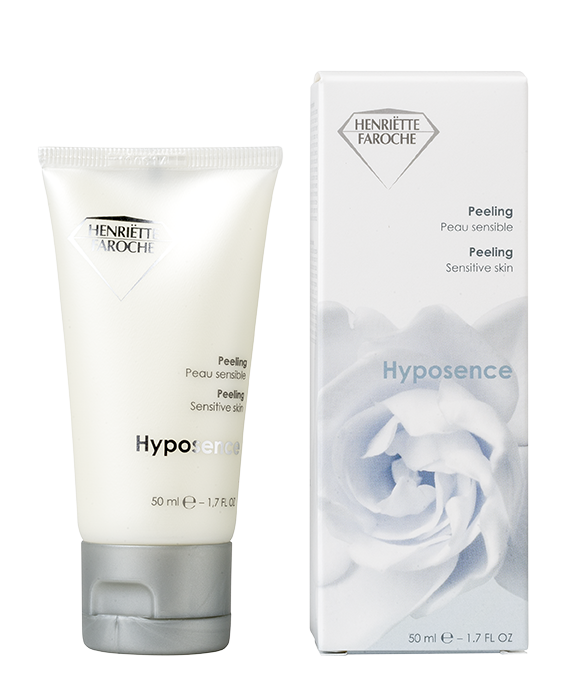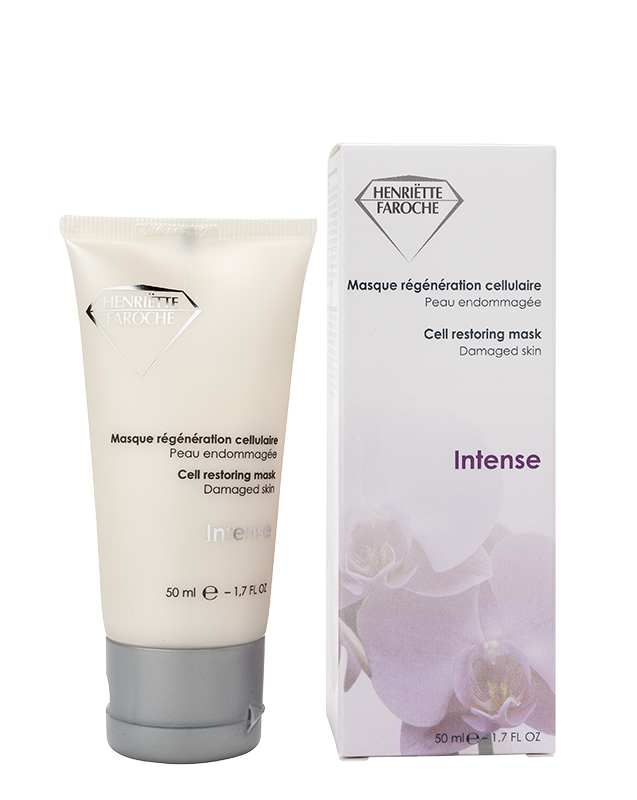

Scrubs & Masks
After you have cleaned your face thoroughly, you can use a scrub and/or a mask.
Scrub
- Intégral Scrub - Face
- Intégral Lysing - Sensitive
- Hyposence Peeling – Sensitive skin
The outer layer of our skin consists of dead skin cells, also called the corneous layer. This layer consists of about 30 layers of skin cells which on average are completely replaced every 28 days. Deeper into the skin, new skin cells are constantly being produced that slowly create the corneous layer from below. From the top we lose the dead skin cells every day.
The corneous layer protects you, but can also make your skin look dull and uneven. This determines the ‘glow’ or ‘complexion’ of your skin.
As you get older, it is less likely that you will lose your dead skin cells. They stick together and won’t let go. This can result in the skin looking dull. Also, pores can become clogged, sebum accumulates and the combination of bacteria and sebum eventually results in the formation of pimples.
So giving your skin a helping hand is not a bad thing, but choose the right peeling for your skin!
How often you can scrub depends on your skin type. Normal to oily skin can usually be scrubbed once or twice a week. For sensitive and dry skin, you should limit using a scrub to once every two weeks.
Don’t scrub too hard and too often. Your skin needs time to recover properly. If you scrub too vigorously, too long or too often, you can damage the underlying skin. Do not scrub if you have wounds, irritated skin, burnt skin or eczema skin.
Mechanical peeling
The Intégral scrub is a form of mechanical peeling. This scrub consists of a cream containing small abrasive grains. These grains are like rubbing the dead skin cells away from your skin.
Apply the scrub to your face/neck and/or décolleté and make light rotating movements. Do not exert pressure but let the rotating movements slowly do their work. In this way the dead skin cells are gently removed.
Remove the scrub with a lukewarm compress (face towel) or rinse clean with lukewarm water.
A microdermabrasion treatment is also a mechanical peeling. In this salon treatment, the skin is peeled off by means of 100% pure microcrystals. The microcrystals are blown onto the skin with a certain force and then immediately sucked off again. The skin becomes smoother and there are fewer blockages. The treatment gives your skin a better blood circulation and a limited amount of collagen, or the supporting tissue of the skin, is produced. This brings your skin back to a good condition. Apart from the treatment level, the treatment may or may not be sensitive.
Ask your Henriëtte Faroche Beautician about the microdermabrasion treatment.
With the scrub you can remove between 3 and 5 layers of the corneous layer. With a microdermabrasion treatment you can remove about 10 layers of the corneous layer and is therefore much more intensive.
Enzymatic peeling
The Intégral Lysing is an enzymatic, protein-splitting cream without grain. The enzyme in this cream dissolves the ‘cement layers’ between the cells, causing them to come loose. Because a lysing contains no abrasive particles, a lysing is often applied to your face. The lysing is very suitable for older, sagging skin and sensitive skin. It also works well for skin with active acne.
Like a scrub, a lysing removes up to 3 layers of the corneous layer.
Apply the lysing generously to your face and leave it on for 10 minutes.
Remove the lysing with a lukewarm compress (facial towel) or damp cotton pads.
Chemical peeling
The Hyposence Peeling is a mild form of chemical peeling with grain. The lactic acid in this peeling is particularly suitable to remove dead skin cells. The peeling stimulates the production of collagen and provides a moisturised skin. Because the peeling is not aggressive, it can even be used on sensitive skin.
Apply the peeling generously to the skin and leave on for 10 minutes. Then massage over the skin with light, rotating movements.
Remove the peeling with a lukewarm compress (face towel) or rinse clean with lukewarm water.
The Glycopeel treatment is a salon treatment and is a very intense form of chemical peeling. The glycolic acid in this peeling accelerates the exfoliation of the corneous layer. This stimulates the collagen and elastin fibres in your skin to create beautiful new cells. Your skin is actually deliberately damaged and is encouraged to produce new skin cells. Your skin will look smoother and firmer after the treatment than before. The effect of fruit acid peeling is cumulative. This means that the result improves as you more often undergo the peeling.
This treatment is therefore always recommended in a spa context for the best result.
Ask your Henriëtte Faroche Beautician about the glycopoeia treatment.
Masks
- Intense Cell restoring mask – Damaged skin
- Intense Hydrovital mask – All skin types
- Intense Vitamin A-C-E mask – Mature skin
A mask is no superfluous luxury in your beauty ritual. A mask not only has a positive effect on your skin, but also on your mind. Take time for yourself and relax!
Henriëtte Faroche has several masks in its assortment, the home masks are from the Intense series. Together with your Beautician, choose the mask that best suits your skin.
By regularly using a mask, you will improve the condition of your skin. The advantage of a mask is that you can see results very quickly. This is due to a high concentration of active ingredients. There is a mask for every problem, from dry skin to oily skin or ageing skin. In the salon, your Beautician has a wider range of special salon masks. Something for everyone.
Use a mask at least once a week. Make sure your skin is well cleansed. If necessary, first remove the dead skin cells with a scrub so that a mask can work in better. You can use a mask brush or just your fingers before applying. Let the mask do its job and then remove it with a lukewarm compress (face towel) or rinse clean with lukewarm water.
